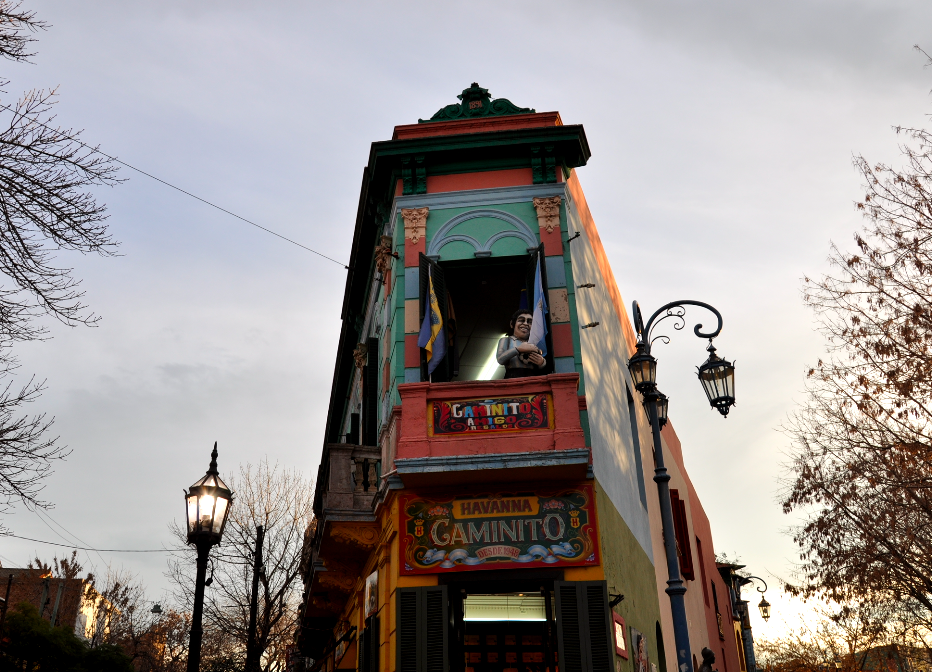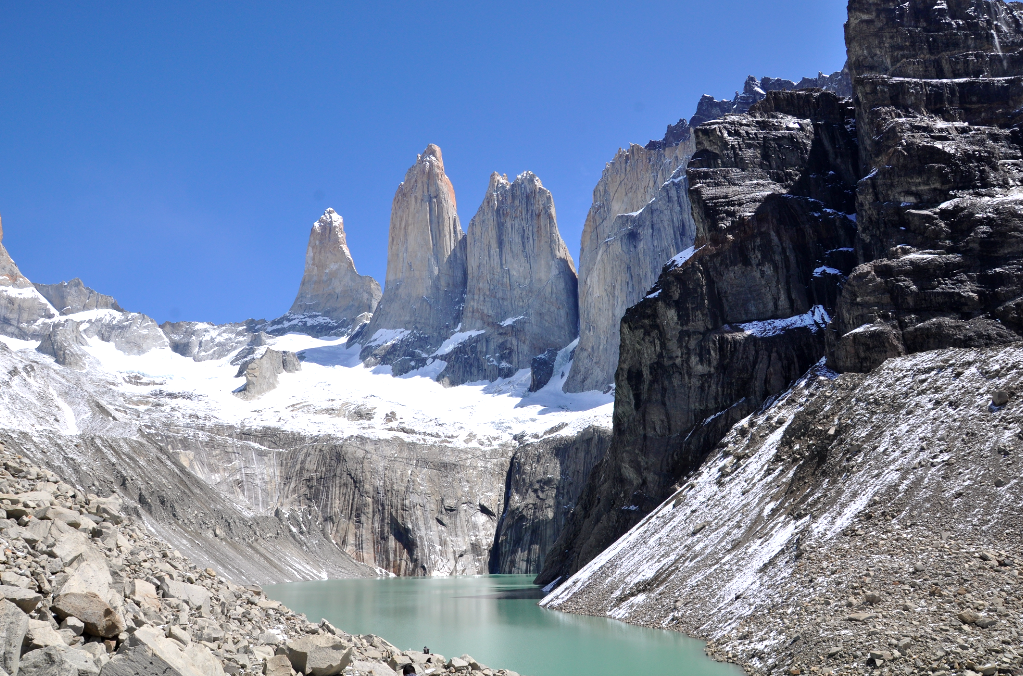
The capital of Argentina is often compared to New York, Madrid or Paris – but Buenos Aires has a soul of its own. The city is seductive and fervent, best known for its guilty pleasure, its streaks and tango saunter.
As the birthplace of tango, Buenos Aires pulsates with a passionate rhythm. The fiery dance is so adored here that it is everywhere – in bars, milongas and on the streets. Tourists interested in learning the tango also flock to Buenos Aires to attend some classes.

Milongas are traditional tango halls where aficionados can take to the dance floor or learn from an instructor. On any night in Buenos Aires you can find a milonga filled with people sitting around the dance floor, drinking their wine or champagne and watching, and being watched. But not everyone in the milonga is the same. Everyone has a specific role to play and there are definite hierarchies in place. There are maestros that travel and teach around the world, tangureros that perform on stage and for your tourist pleasure in La Boca and San Telmo, organizers that provide spaces for dancing, DJ’s that keep the dance floor moving, to live orchestras and tango singers.

For those who have two left feet, there are several cabaret style dinner shows in town, with the most popular being El Viejo Almacen. Tickets cost between $69.50 to $145.
This year, the annual Festival Buenos Aires Tango takes place from 10-20 May. It is the world’s most important tango event, attracting over 250000 participants to the free classes and open-air milongas. The festival has been held since 1999. Workshops featuring the best dancers and musicians from all over the world are organised throughout the city. The dancing continues till dawn, with the passion of tango ignited among the festival goers.
San Telmo
Along the streets of Bohemian district San Telmo, tango dancers dressed in split skirt and suit, pressed hip to hip, check to check – dance with emotions so intense that overseers will likely feel like voyeurs peeping into a private show.
This neighbourhood represents the authentic Buenos Aires. It is lined with historic architecture, antique shops and tango bars. Wandering through the labyrinth of crumbling colonial mansions and churches is a pleasure on its own.

Tango dancers especially like to strut their stuff at the Sunday antique market in Plaza Dorrego. Art lovers will enjoy browsing through antique curios, tango memorabilia and handicrafts there. By night, Plaza Dorrego is transformed into a romantic dining spot. Parillas (steakhouses) are aplenty, the tricky part is finding the best ones. Argentineans are among the largest consumers of beef in the world, with an least 56kg of beef eaten by one person on average.

A meat-loving nation, Argentina knows how to prepare beef, serving the best asado (barbecued meat) in the world. A genuine Argentinean meal will always include bife de chorizo (sirloin strip steak), accompanied by a glass of Malbec wine from the Mendoza region. Finding a restaurant before 8pm can be a challenges, because Argentineans (like the Spanish) tend to eat late, often starting only at 10pm.
La Boca
Another district worth exploring is La Boca, a grittier area flashing with bright colours and quirky warehouse-converted houses. Think Clarke Quay, except that the streets of La Boca are flowing with tango through its veins.

Its crowd magnet – Caminito – is a short pedestrianised street lined with crafts studios, souvenir shops, tango street dancers. Tango and gaucho dancers take centrestage at the numerous alfresco cafes in this area.

Football fans would be familiar with the districts’s stadium, La Bombanera, home to the world-famous team Boca Juniors and its ex-player Diego Maradona. Fans continue to worship their national idol, whose name still graces local souvenirs.
Heart of the City
Another personality of the city produced was Eva Peron. The legacy of the former first lady lives on at Museo Evita in the Palermo district.
These days, you can visit the balcony of Casa Rosada, located at Plaza de Mayo, where Eva charmed her fans. Plaza de Mayo is the city’s original main square, lined with important buildings including Cathedral Metropolitana and National History Museum.

As a city lost somewhere between past and present, Buenos Aires truly captivates. Beautiful, defiant and intense, Argentina seduces with its streetside tango, wafting grills, fútbol (soccer), gaucho culture and the mighty Andes. It is one formidable cocktail of wanderlust that should be experienced once in a lifetime. The flight to Buenos Aires from Singapore may be tiring, but once there you would savour every moment spent in Argentina.
How to get there
I flew on Qatar Airways with a stopover in Doha and Sao Paulo, before arriving in Buenos Aires Ezeiza Airport. The total trip time was 30 hours, including layovers. Nowadays, there are more airlines offering flights to South America, so you can fly on Ethiopian via Addis Ababa, on various European carries via their European capitals, Emirates via Dubai, Turkish airlines via Istanbul.


